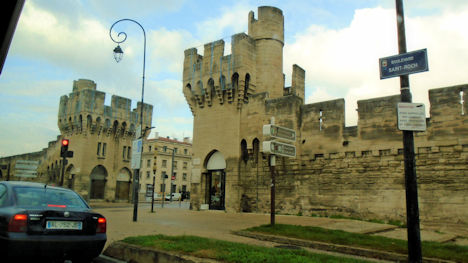
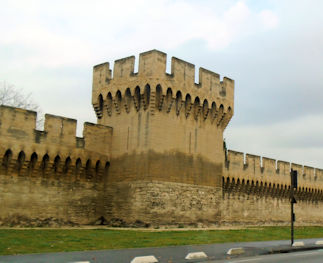
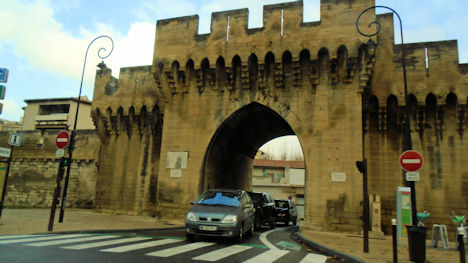
The Daily Diary of a Wandering Restaurateur
Pont du Gard
It finally happened. We took a deep breath, got in the car and left our primo parking spot behind ... most likely forever.
The life expectancy of a vacant parking slot in this town still seems to be about 60 seconds, and while a few cars have moved
out of the small lot next to us since we returned to the apartment, there's no way a place could stay open long enough for me
to get the car from its new spot, drive around the edge of town (most of the roads are one-way) and re-park. (You can tell our
pace of life has slowed down when something as mundane a parking spot is a priority!)
On one hand we're (mostly) fine with the idea of coming all this way and not doing much of anything. At the same time, if you
look at it from a "practical" perspective, it makes no sense at all! I may have attributed part of the reason for our
relative lethargy to the fact that we've been in this area before and visited most of the towns of interest. It's that
familiarity that made us think this would be a good area to hang out for a couple of weeks ... and it may turn out to also be
part of the problem ... if, in fact, there is a problem. Then I thought it might just be that the knee replacement is still
healing and extended walking gets uncomfortable.
But as I reflect, I'm coming to suspect it's something even bigger and more important. What if the frenetic pace most people
set on a trip to Europe is just a way to hide from themselves? What if the real challenge is to become comfortable with
letting go of the guilt for not planning, producing and consuming every minute of the day?
This may be a cultural thing with Americans, but I suspect many people around the world experience a certain amount of
pressure to measure the success of their day by what they’ve accomplished. Maybe the most important accomplishment is just to
experience the sheer joy of BEING. The Italians, of course, have a name for it: Dolce far Niente, the sweetness of doing nothing. [The link takes you to a 58-second clip that
speaks of this.] What if the real challenge of this trip was to get far away from the daily demands and distractions so we
could re-discover ourselves as complete and capable beings, exclusive of what we produce, without expectations or judgement?
I suspect I'll continue to hang on the horns of this dilemma until we head for home on Sunday ... and I'm sure I'll be
processing it until we make a decision about whether to take off again at this time next year. If we do, I'll be curious to
see where we decide to go and with what expectations. Becoming aware of these deeper questions is a big part of why I travel.



We only had to drive about 20 miles each way today. There isn't much of particular interest along the road, but the route took us through the center of Avignon and that was something different. During medieval times when life was more predatory, most of the cities of Europe were protected by walls. Over time, as society became more civil and these cities expanded, the old walls were torn down, their former location marked by a ring road around the city center. Avignon has kept its wall intact around the old town which is dominated by what was once the palace of the Pope. Yes, my Catholic colleagues, your church was once governed from Avignon, not Vatican City. The story gets complicated. Google it.
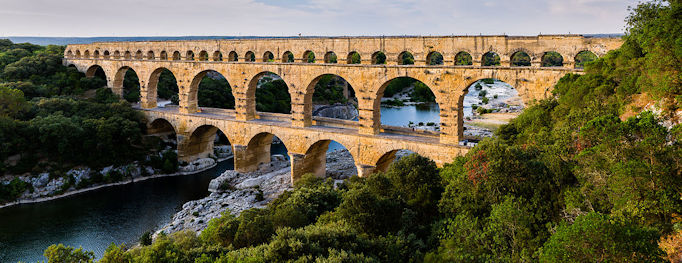
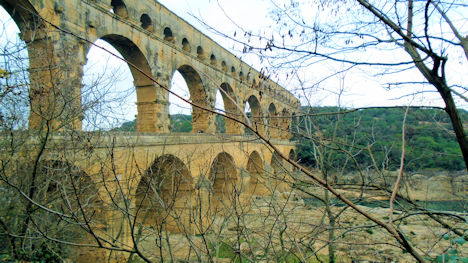
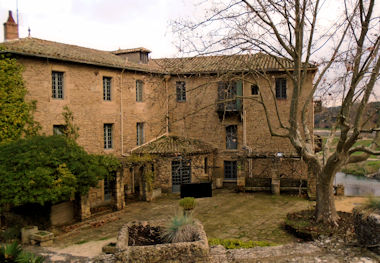
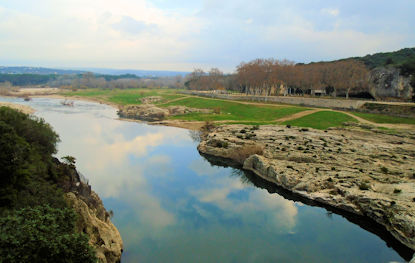
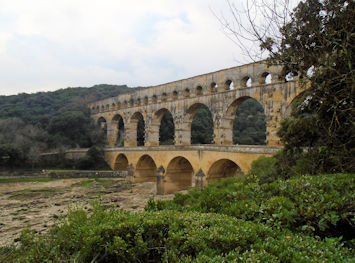
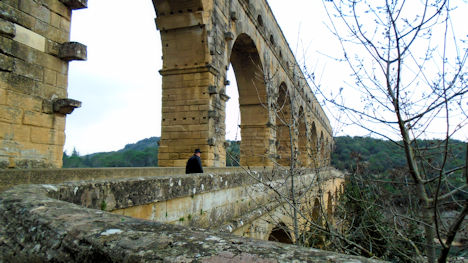
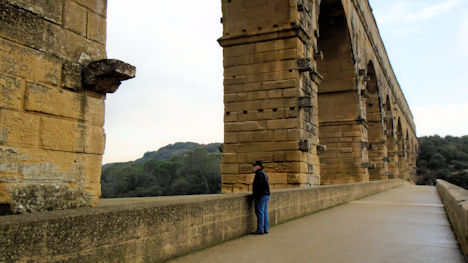
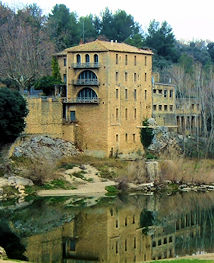
Our destination today was the Pont du Gard, the most famous part of a Roman aqueduct that carried
water from the spring at Uzès to the city now known as Nîmes. The straight-line distance between the two is only about 20 km
(12 mi) but the aqueduct takes a winding route measuring around 50 km (31 mi) because of the need to avoid some foothills.
This amazing engineering project was built in the first century and was in continual use until roughly the 9th century when
maintenance was abandoned.
The bridge has three tiers of arches, standing 48.8m (160 ft) high. The whole aqueduct descends in height by only 17m (56 ft)
over its entire length, while the bridge descends by a mere 2.5 cm (less than an inch) -- a gradient of only 1 in 3,000 --
which speaks to the great precision that Roman engineers were able to achieve using only simple technology. When intact, the
bridge was 360m (1180 ft) at its top. Now it's just over 900 ft. It's the highest Roman aqueduct, but also one of the best
preserved (along with the aqueduct of Segovia). It has been a UNESCO world heritage site since 1985.
Note: Much of the commentary came from Wikipedia, credit for the first photo belongs to Benh Lieu Song. The rest of the
pictures are ours.
© 2015 Restaurant Doctor